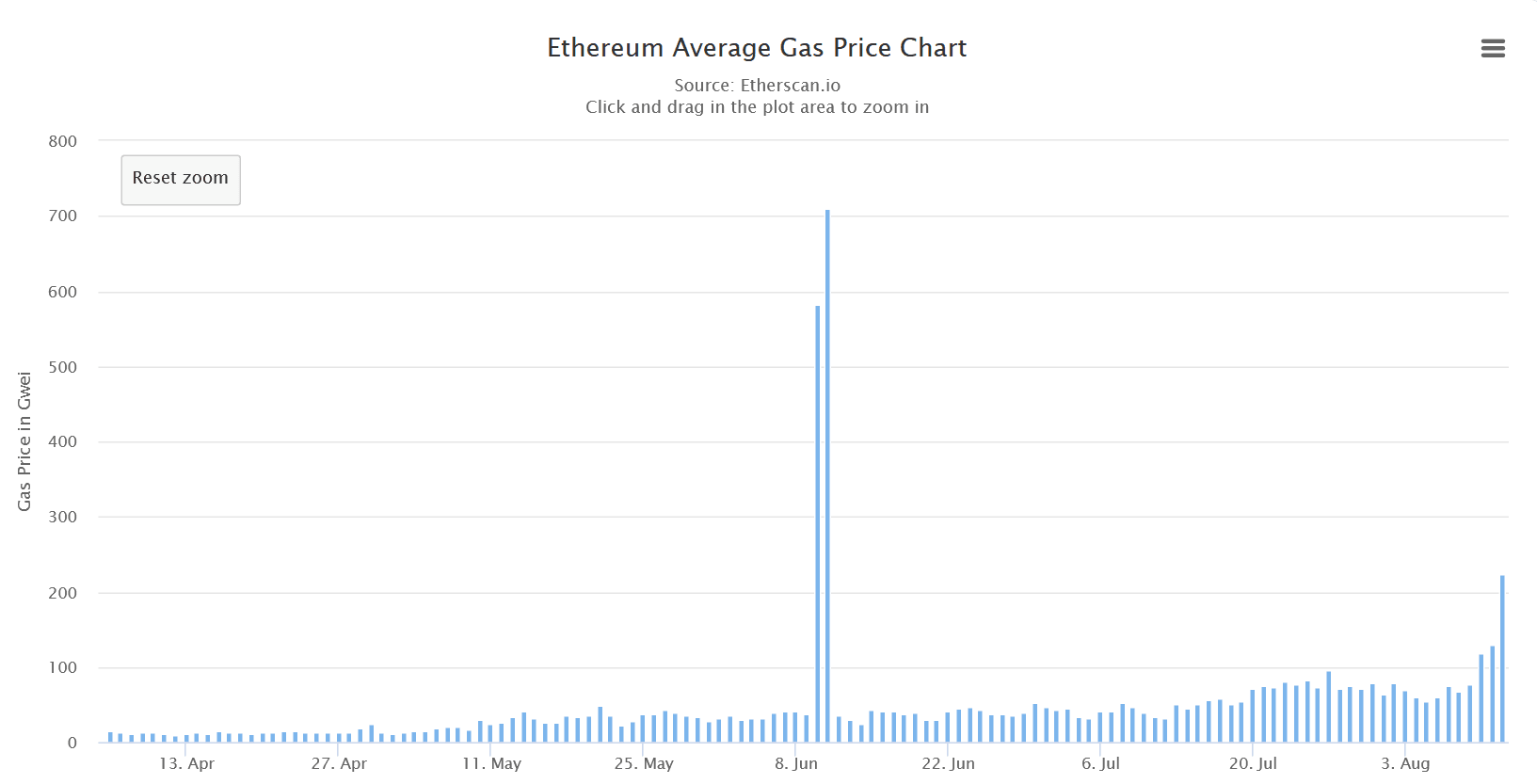The use of the Ethereum blockchain has exploded over the last few months. The culprit is easy to point out. DeFi projects are attracting investors causing a lot of hype. Despite the booming ETH price, this doesn’t only mean good news. With the rising number of transactions come ever rising transaction fees, also known as gas.
Ethereum fees, similar to Bitcoin fees, are a function of demand. Transactions that pay higher fees are processed faster by the miners. Since Ethereum miners are paid in both newly minted ETH and in fees, transactions with higher fees are favored. This gives birth to market dynamics. The higher the number of transactions, the higher the demand, and the higher the fees.
Ethereum has its own fee system, also known as gas. We’ll be looking into it more exactly in this article…
Which DApps are to blame for the recent increase in fees?

The gas fees have been steadily rising in the last few months. And even more so in the last few days.
In recent days, the DApps burdening the Ethereum chain the most have been DeFi projects, and most of all UniSwap. But also others such Aave, Synthetix, 1Inch, or oracle provider Nest, have showcased high numbers of transactions. Unfortunately, MLM-Ponzi scams such as Foresage or Lion Share have also played their part in this.
Gas fees reached a high on wednesday, when investors started flocking over to YAM. The YAM hype caused multiple people to stake their funds, and even lend and stake more funds, causing very high amounts of transactions during this frenzy. Users complained about waiting hours to execute smart contracts, sometimes paying over 50$ in fees! In the pat 30 days, Ethereum miners made $4.6 Million in fees, surpassing the fees made by bitcoin miners.
Ethereum is slowly morphing into a gambler’s-blockchain
DeFi in its current form, is used more or less to bet on the market. When borrowing funds, the collateral is higher than the loan itself. Traders can use the borrowing function to short certain cryptocurrencies. Besides scams, many users are FOMOing hysterically into new projects, often promising very high yields, regardless of how established these protocols are. e.g. YAM finance, despite the developer’s warning that the code is unaudited! The frenzy ended in under 48 hrs after a bug was found in the code.
Thus, the blockchain remains a vehicle for market bets and quick profit making. Other DApps are failing due to the ever rising gas fees, as using them has become unprofitable.
How will it go from here?
Although Ethereum does have scaling solutions such as zkrollups, they are still nascent. Ethereum 2.0 is posed to solve scalability issues and introduce POS (Proof of Stake), but the mainnet could still take months if not years. It is possible DApp developers will start looking elsewhere to launch their products. e.g. EOS which doesn’t use gas.
All in all, it can be said that the blockchain industry still has a long way to go in order to develop sustainable DApps with millions of users. The coming years will show if this problem can be solved, or at least diminished. Interesting to watch right now, is how Reddit will look to solve the scalability of its blockchain based token points system.
Want more news and price analyses? Join CryptoTicker on >>Telegram<< and >>Twitter<<

